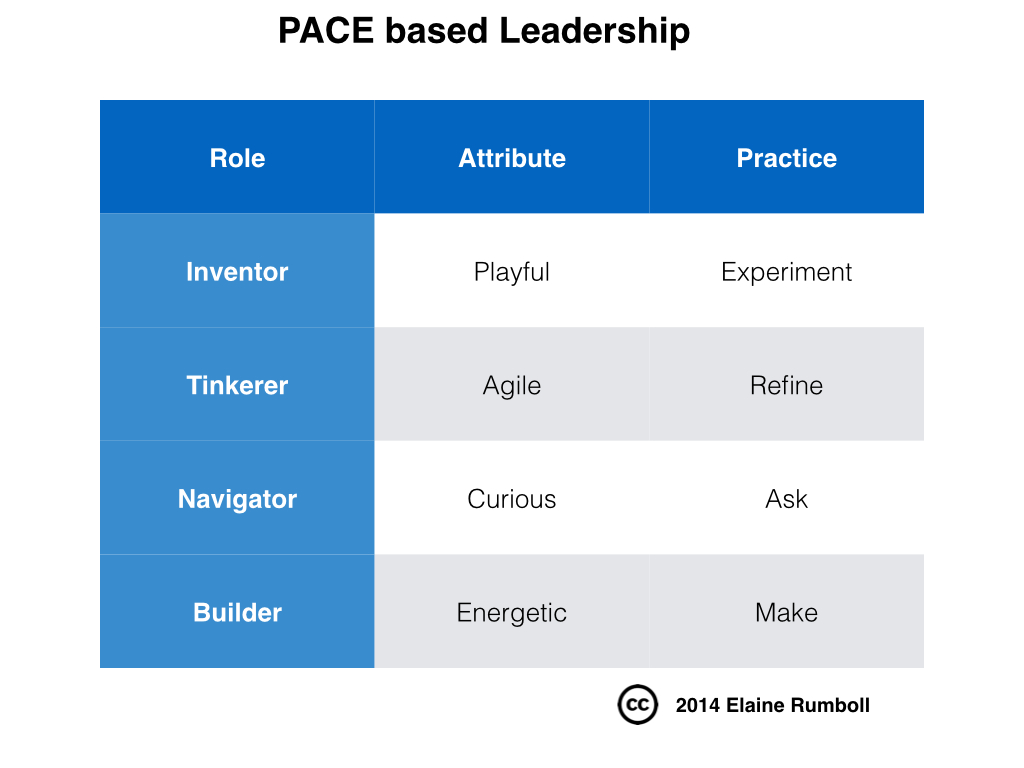How PACE based leadership can energise your business
How often have you been requested to a meeting and dreaded it? Not just because of the fact that they often tend to be dreary and unproductive but also because they are seldom a place for sparking anything new. This is often because people come to meetings stuck in a particular position or mindset. I have developed a model which can, among other things, be applied to renergise a meeting place. It is based on work I have developed around what I have termed PACE based Leadership. The approach draws on four key leadership practices which are required to build highly functional teams, perspectives to be used when grappling with challenges and rethinking new approaches to things. At the heart of PACE based leadership is the emphasis on Play, Agility, Curiosity and Energy as critical leadership practices for today. Leading at PACE is a counter to the attempt to work faster in order to deal with the every increasing complexities and uncertainties of modern day business. For if we understand how to Play, embrace our own curiosity, learn to be more adaptable in the work we do and focus more on managing our energy than our time, the level of resonance and quality of our output is bound to improve.
 Inventors dream up new products, services and processes.
Inventors dream up new products, services and processes.
Tinkerers adapt and improve on the services and products offered.
Navigators set the direction, whilst ensuring the selection, cohesion and synthesis of all the elements
Builders turn ideas into executionable realities
I think that each of these roles requires a focus on a very particular leadership practice in order for their efforts to be effective and sustainable.
Navigators must be Curious
Proust said, "In order to discover new land, one must lose sight of the shore for a very long time". One of the dangers of being a leader is how easy it is to lose sight of one's own role. Power has a fascinating way of making people believe they are invincible, above the morals of lesser mortals; there is also a tendency to believe that one's own solutions are the correct ones. What a healthy dose of curiosity does is to allow for one to be less dogmatic, see other opportunities and other perspectives whilst increasing commercial acumen and mitigating risk. Be fascinated by your own ignorance and see what changes for you.
Tinkerers must be Agile
When one is required to improve a system or change a process, the default response is to look to where it has worked best elsewhere. The danger in this is that each organisation has an internal readiness to change which can only be adopted through the hearts and minds of others who work there. Lego didn't almost collapse because they tried new things. Their system almost imploded because they did not have the cultural willingness for the innovations they were experimenting with. The conceptual conundrum is that organisations are complex, adaptable systems so a simple causal approach to how systems should be changed is bound to land up a failure. Forget about best practice. Look for a new practice which is congruent with where your organisation is, and one which is easily adopted by the current culture.
Inventors must Play
There is enormous pressure on people working in the arena of product and business development to come up with the new. It breeds an overseriousness which can in fact lead to mediocrity and a stifling overbureaucratisation. What Play does is that it moves people out of Ego and into a state of flow. Play makes one more adaptable to change, more emotionally resilient and more open to testing and experimenting with alternatives.
Builders must have Energy
In order to get things done, one needs to recruit the service of others. Above all things this requires energy; energy which is both in the doing and in the motivating of others. Focus on what needs to get done not on how people are going to get it done. Manage their deliverables not their time.
So why not assign these roles at your next meeting - a navigator, a tinkerer, an inventor and a builder. Experiment by first assigning them to ones who obviously fit these roles and then do another round, let them pick a role randomly out of a hat and try to see things from a perspective which is not familiar. Request that their attitude fit their role, be it playful, curious, energised or adaptable. Ask them to use the lens of experimentation, refining, building or making for how they respond to challenges and opportunities raised in your meeting. See what changes, how people shift and what kind of fresh eyed thinking comes out.
